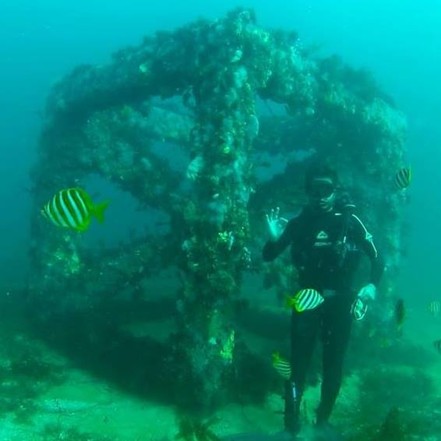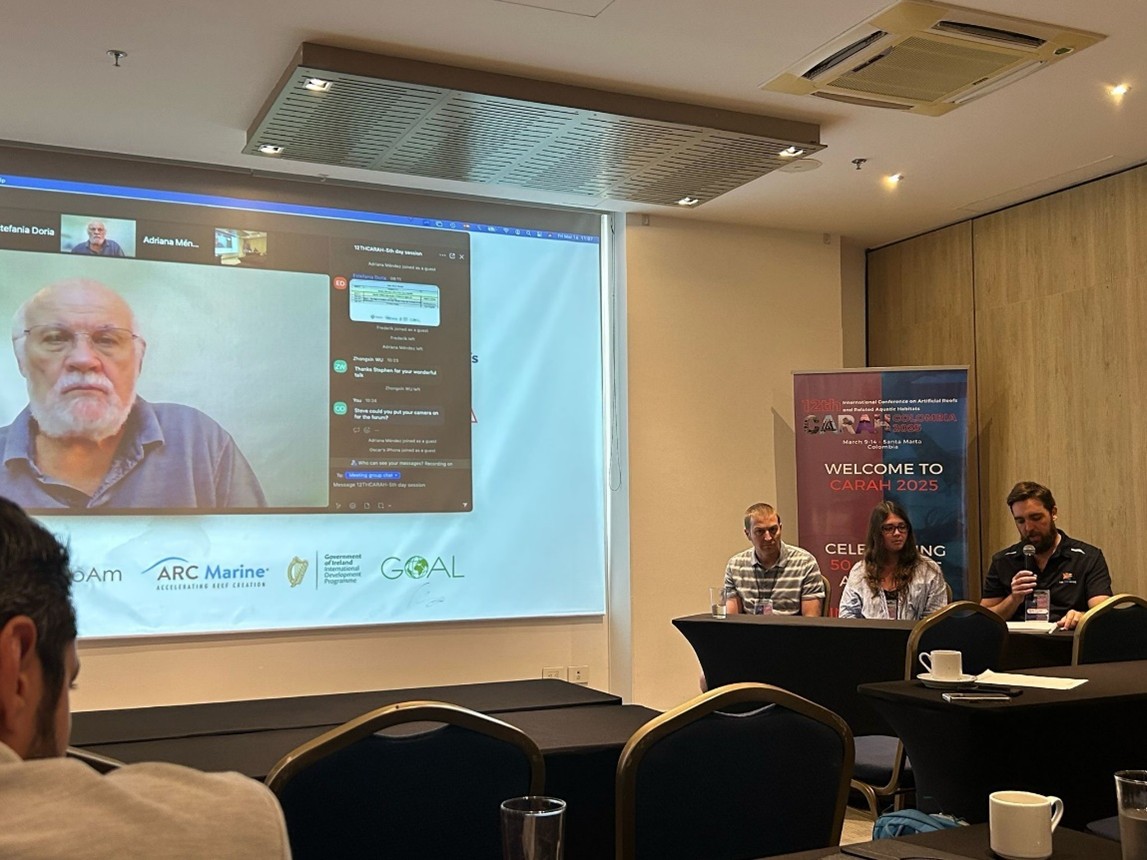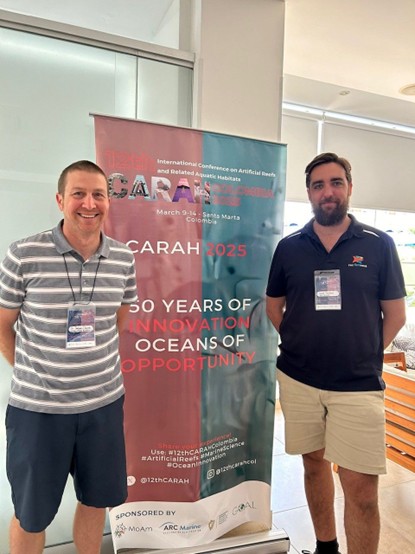Australia is home to more than 150 artificial reefs, providing increased fishing opportunities for recreational fishers. FRDC supported Recfishwest to attend a world-renowned artificial reef research conference to better understand how international policymakers have embraced artificial reefs.

Artificial reefs – or Habitat Enhancement Structures (HES) - are man-made objects intentionally placed in aquatic environments to mimic the characteristics of natural reefs and form unique ecosystems to enhance marine biodiversity.
Globally, HESs are often created using purpose-built concrete modules, unused vessels, decommissioned oil and gas platforms, bridges or building materials.
HESs can positively impact aquatic life and aid in bolstering climate resilience, as well as providing unique and new social benefits.
This includes increased tourism, education and community engagement opportunities along with providing alternate and exciting areas for recreational fishers to use.
In 2018, Recfishwest the peak body representing more than 750,000 recreational fishers from WA, and a group of project partners, installed King Reef, an artificial reef in WA’s Exmouth Gulf. The project partners included the Department of Primary Industries and Regional Development (DPIRD), National Energy Resources Australia (NERA), Curtin University, Broken Hill Proprietary (BHP), Mermaid Marine Australia (MMA) Offshore and Exmouth Game Fishing Club.
King Reef is the largest integrated artificial reef in the Southern Hemisphere and the first of its kind in Australia to be constructed using former oil and gas infrastructure augmented with concrete purpose-built modules. King Reef, enjoyed by diverse recreational groups, is now home to more than 120 different fish species from species such as Barcheek Coral Trout (Plectropomus maculatus), Spangled Emperor (Lethrinus nebulosus), Golden Trevally (Gnathanodon speciosus), Red Emperor (Lutjanus sebae) to Sailfish (Istiophorus platypterus).
To support Recfishwest’s efforts in this innovative space, FRDC provided James Florisson, Recfishwest Programs Manager, the opportunity to expand his global network and gain a deeper knowledge into the latest insights on HESs development and management, by attending the 12th International Conference on Artificial Reefs and Related Aquatic Habitats (CARAH), held in Colombia in March 2025.
Valuable findings from the latest research into productive artificial reefs from across the globe
James said his key takeaways from the conference included debunking the debate around “attraction vs production” and the integral role artificial reefs can have in creating an eco-friendly environment.
“Like natural reefs, these modified habitats will both attract and produce depending on the size of the reef and the position various organisms occupy in the food web,” James said.
“Artificial reefs can also play a role in climate resilience by providing alternative habitats and food sources for marine life. This helps to maintain biodiversity and ecosystem stability.”
Learning about the results of over a decade of research on oil and gas platforms off the coast of California and the significant ecological value they provide, was incredibly useful James said.
This was particularly the case when considering that more than 600 platforms have been converted into artificial reefs in the Gulf of Mexico and the massive positive impact these have on fisheries and local communities.
“This research is some of the most complex and rigorous in the artificial reef space as it extended from fish flesh toxicity tests to larval dispersal modelling and faunal assemblage variation on platforms,” he said.

James was also a panellist on The Future of Artificial Reefs and CARAH: Facing the Challenges of the Anthropocene forum, where he communicated the findings from two FRDC/Recfishwest projects: ‘Artificial Reefs: Suitability of recycled materials for integration into purpose built artificial reefs for enhancing marine productivity, biodiversity and social outcomes’ (FRDC Project 2021-055) and ‘The application, needs, costs and benefits of Habitat Enhancement Structures in Western Australia and cost-effective monitoring methods’ (FRDC Project 2014-005).
James said participants were eager to hear more about these projects with many inquiring about outcomes and research materials.
“They found the framework from 2014-005 particularly appealing as it has international application for artificial reef developments. The assessment matrix from 2021-055 can also be used outside of Australia to assess the suitability of artificial reef materials,” he said.
FRDC artificial reef projects gain global momentum
James said it was very encouraging to see the potential extension of FRDC funded projects on an international scale.
“Florida Fish and Wildlife Conservation Commission (FFWCC), an American state-based government agency that regulates Florida’s fish and wildlife resources, is now aiming to develop something similar,” he said.
Since arriving back home in WA’s Pilbara region, James has continued to foster his global professional relationships.
“Given our shared values within the recreational fishing sectors, discussions with FFWCC have continued, focusing on different artificial reef construction materials; reef monitoring; citizen science and the potential use of Fish Aggregating Devices (FADs)”.

FRDC Related Projects
FRDC Project 2021-055: ‘Artificial Reefs: Suitability of recycled materials for integration into purpose built artificial reefs for enhancing marine productivity, biodiversity and social outcomes’
FRDC Project 2014-005: ‘The application, needs, costs and benefits of Habitat Enhancement Structures in Western Australia and cost-effective monitoring methods’
FRDC Project 2010-400: ‘Tactical Research Fund: Artificial Reefs - Design and Monitoring Standards Workshops’





